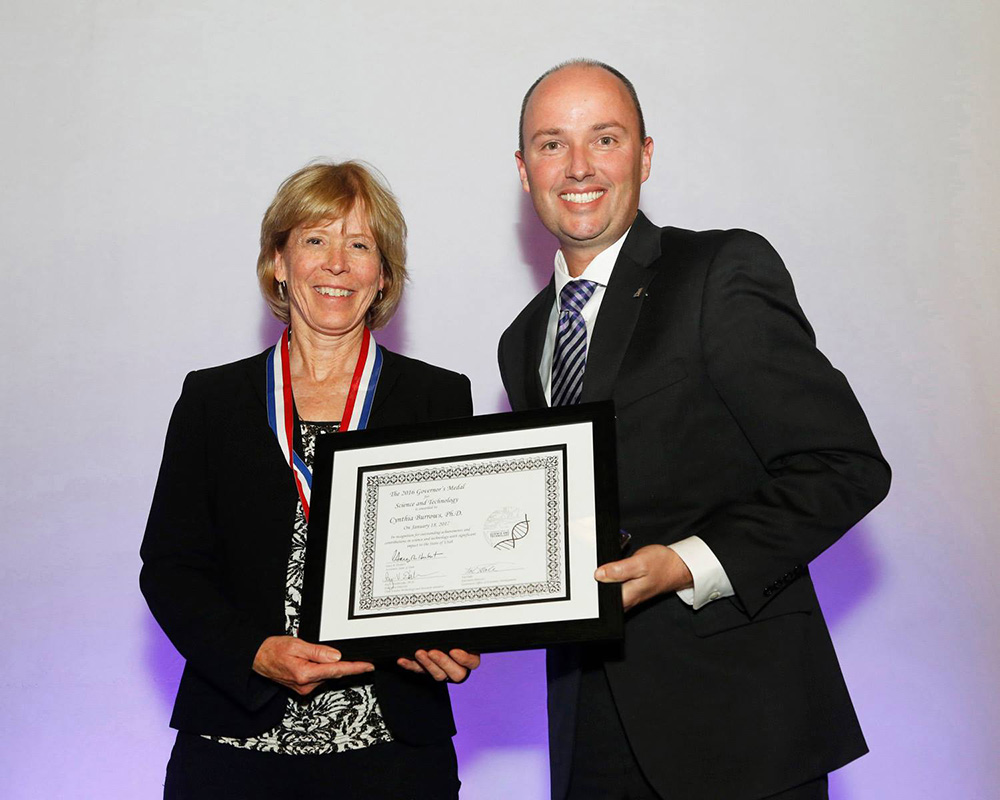
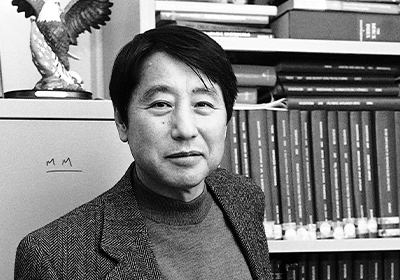
Sung Wan Kim received his Ph.D. in Physical Chemistry with Professor Henry Eyring in 1969. He is currently a Distinguished Professor of Pharmaceutics and Pharmaceutical Chemistry and a Distinguished Professor of Bioengineering at the U. He was Director of the Center for Controlled Chemical Delivery from 1985-2006. Dr. Kim is a pioneer in drug delivery research focused on hydrogels, biodegradable drug conjugates, self-regulating drug delivery, and stimuli-sensitive polymers.
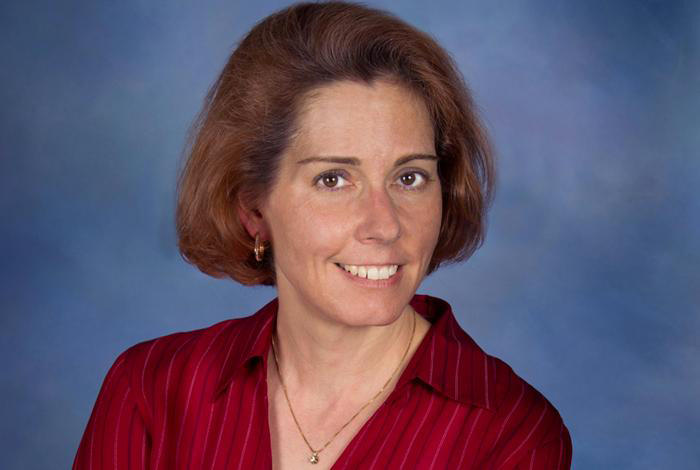
Jaqueline L. Kiplinger obtained her Ph.D. in Organometallic Fluorocarbon Chemistry at the University of Utah with Professor Tom Richmond in 1996. She is now a Fellow at Los Alamos National Laboratory, where she has worked since starting as a postdoctoral fellow in 1999. She is recognized as a uranium and thorium chemistry pioneer and has received numerous awards for her research, service, and mentorship.
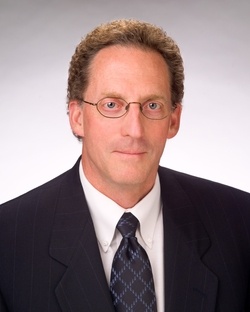
Milton L. Lee received his B.A. in Chemistry from the University of Utah in 1971. He attended graduate school at Indiana University, earning his Ph.D. with Professor Milos Novotny in 1975. In 1976, he joined the faculty at BYU, where he is now the H. Tracy Hall Professor of Chemistry. He specializes in micro separation techniques, column technology for micro separations, and instrumentation for capillary and high-performance separations-mass spectrometry.
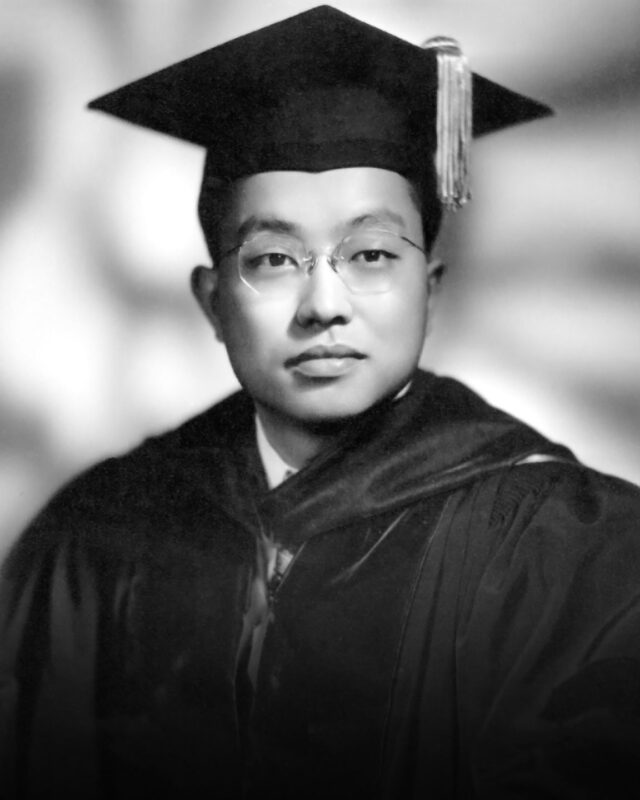
James M. Sugihara received the first Ph.D. ever awarded by the University of Utah in 1947, working with Professor Henry Eyring. He was a faculty member until 1964 when he accepted a professorship at North Dakota State University, where he served as Dean of the College of Science and Mathematics. He was named Dean of the Graduate School and Director of Research in 1974. In 1998, he was awarded an honorary doctorate at NDSU and retired as Professor Emeritus.
Former faculty members Josef Michl and Sara Allensworth Michl pledged a legacy gift to name a future Presidential Endowed Chair in Chemistry.
Michl began his independent career at the University of Utah in 1970 after obtaining his Ph.D. at the Czech Academy of Science in Prague and postdoctoral studies at the University of Houston, University of Texas-Austin, and the University of Utah (with Prof. Frank Harris in Physics). In 1986, he moved to UT-Austin and returned to the Rockies a few years later as a Professor of Chemistry and Biochemistry at the University of Colorado, Boulder.
Michl’s research is characterized as far-reaching and groundbreaking. Trained as a theoretical physical chemist, his most significant impact has been in experimental and theoretical physical organic and materials chemistry, helping to elucidate how chemical reactions occur and to predict new properties of reactive molecules and materials. His work has impacted the design of molecular electronics and solar energy conversion processes. The recipient of many awards, Josef is a member of the U.S. National Academy of Sciences and holder of the Heyrovsky Gold Medal from the Czech Academy of Sciences.
Kevin Teaford received the prestigious 2017 Helmut E. Dreschel Award from the American Scientific Glassblowing Society (ASGS). This is one of the society’s highest awards and is presented in recognition of a member’s tireless efforts to promote the ASGS and the field of Scientific Glassblowing. With his position as Chair of the Allan Brown Workshop for the ASGS, it’s easy to see why he was chosen for this honor. Aside from being an excellent glassblower, he’s paramount in setting up torches, lathes, and other necessary equipment for the annual Allan Brown Workshop by the ASGS. This entails a lot of travel and hard work on Teaford’s part, but when asked whether he would have ever expected to receive an award like this, he said, “I was just doing my job.”
Teaford was also the 2015 recipient of the Arthur Dolenga Award, given by the Great Lakes Section of the ASGS, which recognizes outstanding administrative, technical, or fraternal contributions to scientific glassblowing. He is greatly valued by the ASGS but doesn’t let his awards go to his head. According to Teaford, “I just look out for the success of the seminar and make sure everything stays safe.”
On January 18, 2017, Distinguished Professor and Chair of the Department of Chemistry Cynthia Burrows was awarded a 2016 Governor’s Medal for Science and Technology.

Matthew Sigman, Distinguished Professor & Peter J. Christine S. Stang Presidential Endowed Chair of Chemistry, was awarded the ACS Award for Creative Work in Synthetic Organic Chemistry “For his creative, seminal work in synthetic organic chemistry, especially his innovative contributions to the Wacker oxidation and Heck reaction.”
Professor Ryan Steele was awarded the 2017-18 College of Science Award for Fostering Undergraduate Research Excellence, an award given in recognition of his outstanding contributions to undergraduate research. Steele recalled that when he arrived in Utah six years ago, there was a shortage of graduate students available to perform analysis in his group, so he decided to take a chance on a select handful of undergraduate students from his Quantum Chemistry course. “Suffice it to say that I was pleasantly surprised. The undergraduates at the University of Utah are phenomenally talented, and they constantly surprise me with their ability to be top-notch researchers. The award includes funding that will be put to use supporting undergraduate researchers, and Steele is excited to continue their contributions to the University’s research program. “The proverbial punch line for this award is that the students deserve all of the credit. I have been lucky to have some students over the years (including my current ones!).”
Professor Charles Atwood was awarded the 2017-18 College of Science Award for Teaching Excellence. Atwood’s dedication to the success of his students is remarkable and something he takes very seriously. “One of the things I’m proudest of here at Utah is that in the five to six years I’ve been here, we’ve managed to increase student success rates, especially for those students at the bottom. We have data that shows they are doing 22% better while at the same time making the course harder.” Another luxury he’s had over the years is seeing the successes of his previous students. “Occasionally, I’ll hear from students or Google them and see all their cool jobs. Sometimes I don’t think I have an effect, so seeing students doing well is nice.”
Amanda Bischoff received the 2017 Outstanding Undergraduate Researcher Award from the College of Science and was honored at the Undergraduate Research Awards Luncheon on April 3, 2017. “I feel that this award reflects not only my abilities but on the dedication and guidance from my faculty mentor, Matt Sigman, as well as my lab members, whose advice and support have been essential in helping me achieve my research goals.”
Graduate Teaching Assistant Jen Crawford has been awarded the NSF Graduate Research Fellowship. The Graduate Research Fellowship “recognizes and supports outstanding graduate students in NSF-supported science, technology, engineering, and mathematics disciplines who are pursuing research-based master’s and doctoral degrees at accredited United States institutions.”
Andrew Roberts joined the faculty in the fall of 2017. Roberts received his Ph.D. from the University of California in 2013 and was a postdoc at Memorial Sloan Kettering from 2013-2017.
Academic Advisor Natascha Knowlton was the recipient of the University of Utah 2017 UAAC New Outstanding Advisor Award and will represent the University of Utah in the National Academic Advising Association (NACADA) advising awards next year. Tascha, assisted by Whitney Hills, is responsible for advising our nearly 400 chemistry majors.
A team of researchers led by University of Utah chemical engineering and chemistry professor Marc Porter and U surgeon and professor Courtney Scaife developed a rapid, portable screening test for liver cancer (hepatocellular carcinoma) that doesn’t involve sending a specimen to a blood lab and cuts the wait time for results from two weeks to two minutes. This new and inexpensive test — the team is working to lower the cost to about $3 per test — can be administered wherever the patient is, which will be particularly valuable in developing nations with little access to hospitals.
The U’s team, which includes Nano Institute of Utah research associate Jennifer Granger, chemical engineering doctoral student Alex Skuratovsky, and U surgery assistant professor Jill E. Shea, published their research in the latest issue of Analytical Methods, describing how the test works for alpha-fetoprotein, a widely-used marker of liver cancer.“If we can develop a rapid test that performs at a high level of clinical accuracy,” Porter says, “then we’ve got something that can impact human lives.” Researchers also believe the test can be easily modified to detect infectious diseases such as tuberculosis, malaria, and dengue fever, a mosquito-borne tropical disease that can be life-threatening.
The test uses a small domino-sized plastic cartridge containing a paper membrane that selectively traps biomarkers (proteins specific to a particular disease) from biological fluids. A tiny droplet of blood, saliva, urine, or even a teardrop, from the patient, can be dropped onto the membrane. This is followed by a droplet of gold nanoparticles, which tags the biomarkers trapped in the membrane. If the biomarkers are present, a red spot appears, signaling that the patient has the disease and should seek more testing and possible treatment.
A handheld spectrometer manufactured by project collaborator B&W Tek, a Delaware-based manufacturer of mobile spectrometers, can analyze the membranes and measure how much of the biomarkers is present, which in the future could determine the severity of the disease or how a patient is responding to treatment.
The idea for the test is a spinoff of a similar test Porter developed eight years ago that astronauts on the International Space Station used to test the cleanliness of their drinking water. “This is a smarter offshoot of that,” says Porter.
Now that the team has proven the concept with liver cancer and built a prototype test kit, they plan to evaluate the technology in Mongolia in the spring of 2019. The East Asian country has the world’s highest rate of liver cancer.
The project was funded by grants from the National Institutes of Health, the National Cancer Institute through the Affordable Cancer Technologies Program, and the Huntsman Cancer Institute. The team also received funding from Utah-based nutritional supplement company USANA, which is interested in using a form of the test for customers with certain vitamin deficiencies.
Professor and Chair of the Department of Chemistry Cynthia Burrows was awarded the James Flack Norris Award in Physical Organic Chemistry for 2018.
Professor Rick Ernst, along with Benjamin Harvey, a research chemist at the Naval Air Warfare Center, China Lake, were invited to supply the cover for Volume 2017, Issue 9 of the European Journal for Inorganic Chemistry (EurJIC), which featured a major result of their research: the first-ever recognition of C–C agostic interactions with a transition metal center.
Professor Luisa Whittaker-Brooks was named a Scialog Fellow by the Research Corporation for Science Advancement for 2018. She was also awarded the Ovshinsky Sustainable Energy Fellowship, an award given by the American Physical Society in order to recognize and support promising exploratory research in the area of energy sustainability. Whittaker-Brooks also received one of the L’Oreal USA For Women in Science grants, which will support Young & WISE (Women in Science and Engineering), an outreach program started by the Whittaker-Brooks research group that mentors young female students at Kearns High School.
Professor Ryan Steele was awarded the 2017 PCCP Emerging Investigator Lectureship from Physical Chemistry Chemical Physics (PCCP). The lectureship was created in order to recognize and support an emerging scientist working in physical chemistry, chemical physics, or biophysical chemistry who is making an outstanding contribution to their field and is at an early stage of their career, and also acts as a platform to showcase their research to the wider scientific community.
Alumni News:
Steven and Sarah Snow both graduated with their Ph.D.s in 1985 under Bob Parry. Steven recently retired from Dow Corning Corporation after a 30-year career in Research and Development. He is now the Director of Research and Development at AB Specialty Silicones, a small chemical company in the Chicago area. Sarah has worked in Research and Development for Dow Corning, Caltech, and Clorox.
Joe Stewart graduated from the University of Utah Department of Chemistry with his MS in 1991. He is currently employed as a Research Engineer and Assistant Lab Manager at the Utah Water Research Laboratory at USU in Logan, Utah. His work involves method development for chromatography and also for mass spectrometric approaches to the analysis of anthropogenic compounds in the environment. He also assists students with the setup and maintenance of bench-scale experimental reactors. Some of his past roles have included Senior Project Engineer in the water management group at a copper mine, Process Development Chemist for the study of treatment methods of acid mine drainage, and owner of OnSite Analytical Services, a small environmental testing laboratory and consulting business.
Alan Eastman is a Ph.D. recipient since 1975 and has since co-founded his own company, GreenFire Energy, which is focused on geothermal energy. However, while most geothermal-to-electricity companies use water pumped down a well into a hot rock formation and then back up where it is flashed to steam and used to turn a turbine, GreenFire does things a little differently by using supercritical carbon dioxide (sCO2) instead, which has a couple of benefits. First, it eliminates the problem that arises with most of the accessible hot rock being in the West and most of the water being located in the East. Second, Hot sCO2 is much less dense than cold sCO2, so it is possible to set up a siphon in which the cool sCO2 descending to the hot rock formation drives the circulation of sCO2 through the entire fluid system, eliminating or greatly reducing the need for pumping. In early March, GreenFire received a $1.48 million grant from the California Energy Commission to fund their technology testing for which they will be using an existing well at the Coso geothermal site located on the US Navy’s China Lake Naval Test Station. Not only do they expect to produce a small amount of power in that first test but to also obtain the financial and technical data necessary to build and sell full-scale commercial units. According to Alan, “Geothermal energy is a far cry from boron hydride chemistry, the subject of my thesis, or refinery catalysis, the area I worked in for many years, but perhaps it just illustrates the ability to be flexible that I learned in grad school working with Bob Parry at the U!”
Jessica Kramer graduated with her Bachelor of Science in 2004 and is very happy to be back home at the University of Utah, now as an assistant professor of bioengineering. She obtained her Ph.D. from UCLA and did post-doc work at UC Berkeley and Stanford. She started her lab in February, and her team is investigating the role of cell-surface glycoproteins in cancer, infection, absorption of pharmaceuticals and nutrients, and glycoproteins that protect cells from damage during freezing.
Jaqueline Kiplinger, Los Alamos National Laboratory Fellow, was presented with the International Union of Pure and Applied Chemistry (IUPAC) 2017 Distinguished Women in Chemistry or Chemical Engineering award on March 9, 2017, and out of all twelve recipients, was the only one from the U.S. She was recognized for her contributions to the organometallic chemistry of pentavalent uranium, the realization of a terminal nitride complex of uranium, and non-aqueous uranium and thorium precursors for use in subsequent inorganic and organometallic synthetic efforts. In an article published on the Los Alamos National Laboratory website, Alan Bishop, Principal Associate Director for Science, Technology and Engineering at Los Alamos stated, “The IUPAC Award recognizes Kiplinger’s outstanding scientific achievements. She is a pioneer in uranium and thorium chemistry, and her research has significantly expanded the broad understanding of actinide and lanthanide chemical bonding and reactivity… Her work provides scientific underpinning that supports the Laboratory’s national security mission as well as advancing the fundamental understanding of actinide chemistry.”
Dallen Cox graduated in 1977 with his BS in chemistry and has experienced a rewarding career. He enjoyed working as Concentrator Chief Chemist for the Kennecott Copper Corporation Assay Office until 1985, after which he became employed by the Tooele Army Depot, where he started their first Oil Analysis Program to test the operability of engines and transmission based on oil sample testing. By 1993 he had built the analytical facility into a fully operational environmental laboratory as the laboratory leader, in addition to maintaining oil analysis capabilities. After the Army Depot closed, Dallen began work with the Chemical Ammunition Destruction System (CAMDS), where he was the leader of a team of government scientists who completed the (5X) test, which was vital in sending metal for nerve gas storage containers to a landfill. While working for CAMDS, Dallen was also the Laboratory Director and was an integral part of creating a method for the neutralization of the deadly nerve gas VX.
Craig Metcalf graduated with a Bachelor of Science in Chemistry and proceeded to spend a couple of years doing biomedical research at the University of Utah. He took a change of direction after that, however, and decided to go to law school. He has spent most of his career as a patent attorney, a profession that requires both a law degree and a science or engineering degree. He is using his talents as a patent lawyer to continue working in the chemistry and biomedical industry and has drafted and prosecuted more than 1,000 U.S. patents, along with many foreign counterparts around the world. He has done patent work for Fortune 500 companies, smaller companies during all stages of development, and universities such as the U.
Sucharita Kundu graduated with her Ph.D. in 2009 and is currently working as Publications Manager for Editage, a division of Cactus Communications. Based out of India, Suchi helps authors all around the world with their publication requirements.
Alyssia Lambert earned her BS and MS from the University of Utah Chemistry Department in 2011 and 2014. In the fall of 2016, she accepted a position as a tenure-track faculty member at Pierce College in Puyallup, Washington.
